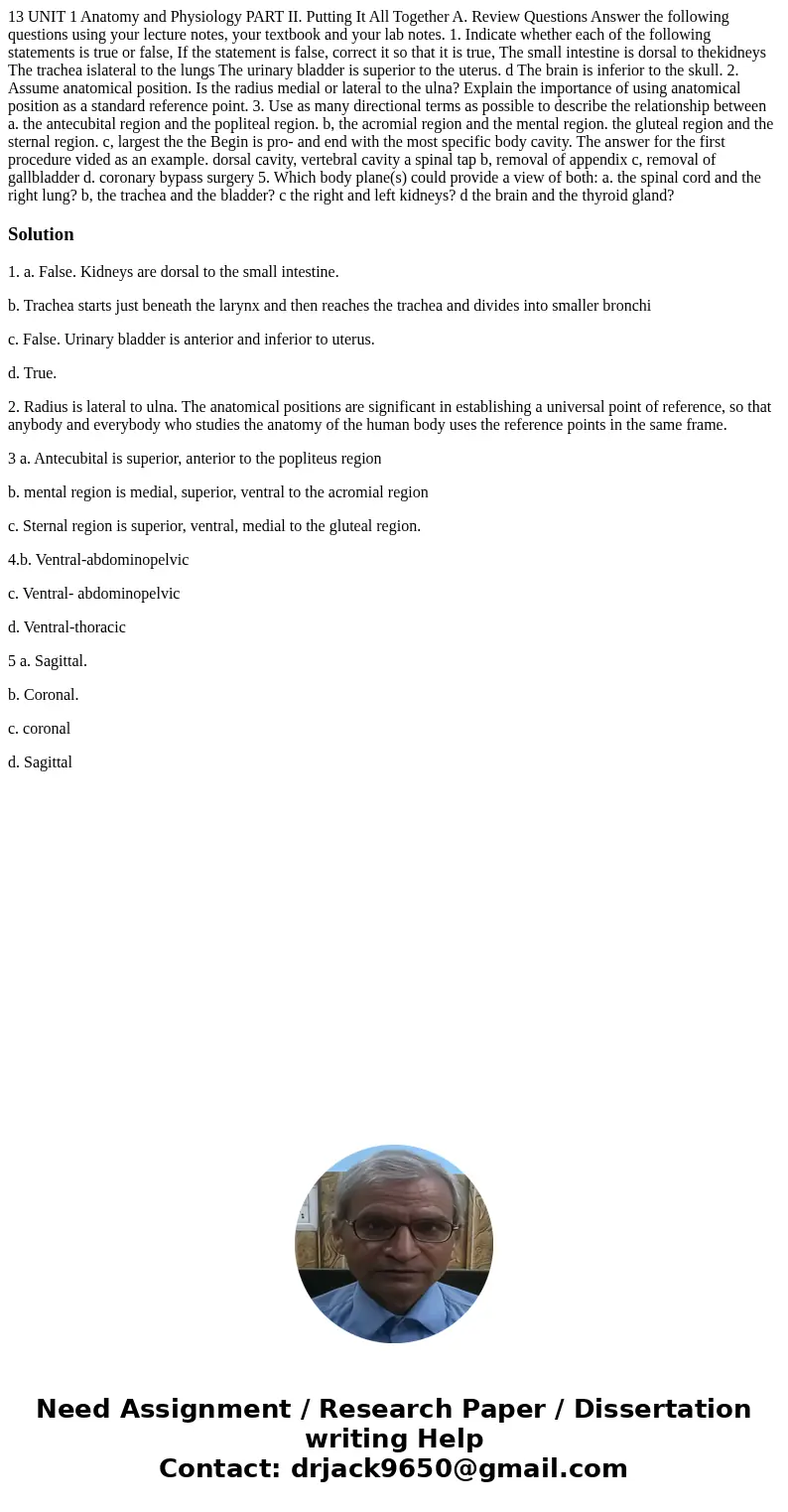13 UNIT 1 Anatomy and Physiology PART II. Putting It All Together A. Review Questions Answer the following questions using your lecture notes, your textbook and your lab notes. 1. Indicate whether each of the following statements is true or false, If the statement is false, correct it so that it is true, The small intestine is dorsal to thekidneys The trachea islateral to the lungs The urinary bladder is superior to the uterus. d The brain is inferior to the skull. 2. Assume anatomical position. Is the radius medial or lateral to the ulna? Explain the importance of using anatomical position as a standard reference point. 3. Use as many directional terms as possible to describe the relationship between a. the antecubital region and the popliteal region. b, the acromial region and the mental region. the gluteal region and the sternal region. c, largest the the Begin is pro- and end with the most specific body cavity. The answer for the first procedure vided as an example. dorsal cavity, vertebral cavity a spinal tap b, removal of appendix c, removal of gallbladder d. coronary bypass surgery 5. Which body plane(s) could provide a view of both: a. the spinal cord and the right lung? b, the trachea and the bladder? c the right and left kidneys? d the brain and the thyroid gland?
1. a. False. Kidneys are dorsal to the small intestine.
b. Trachea starts just beneath the larynx and then reaches the trachea and divides into smaller bronchi
c. False. Urinary bladder is anterior and inferior to uterus.
d. True.
2. Radius is lateral to ulna. The anatomical positions are significant in establishing a universal point of reference, so that anybody and everybody who studies the anatomy of the human body uses the reference points in the same frame.
3 a. Antecubital is superior, anterior to the popliteus region
b. mental region is medial, superior, ventral to the acromial region
c. Sternal region is superior, ventral, medial to the gluteal region.
4.b. Ventral-abdominopelvic
c. Ventral- abdominopelvic
d. Ventral-thoracic
5 a. Sagittal.
b. Coronal.
c. coronal
d. Sagittal

 Homework Sourse
Homework Sourse